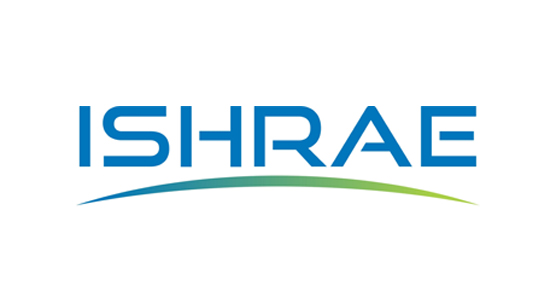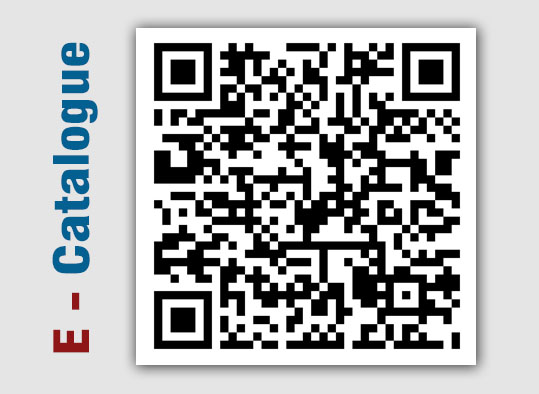Modern Counter Drone Systems – A Technology Review
.jpg)
Mr. Pawan Vashisht
General Manager - Systems Engineering
Introduction
Until recently, Drones and UAVs which were
just a matter of curiosity, have fast become a critical part of military
missions and low-enforcement operations. We are also witnessing
commercialization of drones, as they are expanding their reach to oil and gas
companies, news agencies, Survey Agencies, Land and Water resources protection
agencies etc. However, the diminishing cost of drones and its easy access to
public has resulted in a number of drones related incidents across the globe.
The ever-evolving electronics and
communication technologies have made drones smaller and light-weight, while
increasing their efficiency in terms of payload capacity, speed, guidance and
navigation, manoeuvrability, and range. These developments, though in many ways
beneficial, also pose several threats, not only to public safety but also to
security of critical infrastructures, defence establishments and installations,
communication network and law & order institutions. Anti-social elements
and insurgent groups use advanced drones to carry out terror missions,
smuggling, aerial surveillance at restricted/secured zones and public
gatherings like sporting events, political rallies, etc. UAV swarm attack is
another potential threat, wherein the formation makes it extremely challenging
for security agencies to deter them in a arduous environment.
Law Enforcement and security agencies in
our country strive to regulate and prevent these potential threats by adopting
several measures. However, because of diverse frequency signature of drones and
unavailability of an open source library for drone frequencies, it is a
challenge to detect and neutralize these unmanned aerial vehicles effectively
and efficiently.
Incidents
that call for Attention!
Last couple of years witnessed a growing
number of drone related incidents worldwide. Let's look at some of these
critical incidents reported,
• UK: Following the reports of drone sightings close to the runway of Gatwick
Airport, more than 1,000 flights were either cancelled or disrupted between
19th and 21st December 2018 impacting 140,000 passengers.
• Saudi Arabia: The world's largest oil
processing facility and oil-field was set on fire by a drone attack. The raids
led to the interruption in the production of an estimated 5.7 million barrels
of crude, which is about half of the country's total production.
• France: Drones flew over the French
Nuclear Power Facility in Normandy and dropped smoke canisters on the roof
creating panic.
• USA: A mysterious swarm of 17 to 30 large
drones were spotted in the skies of Colorado and Nebraska, consecutively for
several nights creating uncertainty among people and local authorities.
• India: Arms & Ammunitions dropping
incidents have been frequently reported at the northern borders using Drones
• Spain: Flights were disrupted for over an
hour at Madrid International Airport after reports of drone sighting in Airport
zone.
• Germany: Drone sightings at Frankfurt Airport resulted in suspension and diversion of several flights in May 2019 and March 2020.
Moreover, as shown in Figure-1, the
worldwide shipments of consumer Drones have steadily increased over the past
five to six years. In 2021, these numbers are expected to hit 67.7 Million and
eventually by 2025 it is expected to be 4.1 Billion. With the rise in Drone
population, the adverse incidents are also bound to exponentially increase, and
it is paramount for any government to protect its borders, assets and people
from these potential threats. If gone unchecked, these threats may result in
loss of many lives and immense financial implications to the state.
All the above discussed factors call for
advanced C-UASs (Counter-Unmanned Aerial System) with rapid detection
capabilities and sophisticated jamming and neutralizing technologies.
Counter-Drone Systems - Key Technologies
Counter-Drone Systems, also sometimes known
as Anti-Drone systems or C-UAS, can be passive (simply looking or listening) or
active (sending a signal out and analysing what comes back) and can perform
several functions including,
• Detection
• Identification and Classification• Locating and Tracking
• Generate Alerts and/or Trigger a Jamming
System
All the above functions do not occur or
trigger at the same time, however, these are a chain of functions that perform
almost in real-time once a drone is detected.
There are several technologies that help
detect a drone based on its distance, altitude, type, etc., the most common
being Radars, optical sensors and acoustic sensors. These systems not only
detect drones in the area of surveillance, but also detects birds, kites, other
flying/floating objects and moving objects on ground. This is where
Identification and Classification of objects come into picture. The system
identifies various objects and classifies drones from the large clutter.
Advanced C-UAS systems go one step further to even identify the drone detected
by capturing its model, make, digital fingerprint, Radar signature, MAC Address
(Media Access Control) etc. making it easy to trigger or deploy an appropriate
counter-measure.
It is great to detect, identify and
classify a drone, however knowing its exact location enables the system to
deploy effective counter measures. Advanced C-UAS systems can not only locate
the drones with precision, but also provides information such as speed, flight
direction and help track them in real-time.
Drones have low Radar Cross Section (RCS)
and relatively low speed - these characteristics make the task of detection
challenging, and thereafter, identification and localization even more so.
Several approaches can be adopted to detect these aerial systems. These methods
or technologies can broadly be classified as:
• Radio Frequency (RF) Analysers
• Radars
• Video / Electro-optical (EO) Sensors
(Cameras) and
• Audio / Acoustic Sensors (Microphones)
None of the above by itself can effectively
detect a drone reliably. An effective drone detection system needs to be
designed based on the coverage range, angle and the surrounding environment.
A multiple array of sensors with an
overlapping coverage area in a layered architecture is the best and effective
way of detecting the drones. Due to the rapidly evolving drone technologies,
most military agencies are now embracing this multi-layered counter-measure approach,
which offer higher detection ratios compared to the traditional systems.
RADIO
FREQUENCY (RF) ANALYSERS
Almost all drones use radio signals for
communication, command and control. They receive commands from the remote
controller and send data such as video, images, telemetry (GPS/GNSS location,
battery status) etc. back to the remote control/ground station.
RF Analysers consist of one or multiple
antennas to receive signals and a processor to analyse the RF spectrum. They
can be used in any type of environment, such as urban, hilly, noisy, forests,
coastal, etc. to enhance and ensure airspace security. These RF sub-systems are
designed to detect radio communication between a drone and its ground
controller. Some RF Analysers can identify the drone make and model by
analysing the waveform signature while some can even identify the MAC addresses
of the drone and controller if they communicate over WIFI. Advanced RF
Analysers can also facilitate real-time mapping of drones and the remote
controller.
There are several benefits of using RF Analyzers such as, relatively low cost, detects multiple drones at a time, identifies the drone signature, and importantly works in real-time. By deploying multiple RF Analyzers simultaneously, the user can triangulate drones and its controllers. Since they are passive equipment, no license is warranted by law-enforcement authorities.
RF Analyzers have certain demerits though.
If a drone is not using an RF sub-system (for instance, operating over 4G/5G
mobile network or autonomous / pre-programmed drones), it will be totally
invisible to an RF Analyzer. Moreover, RF Analyzers may also detect various
other RF devices, such as WIFI routers, smart home appliances, industrial grade
transmitters, etc. in the vicinity, making them less effective in crowded RF
zones. Hence, RF Sensors alone may not
be a reliable solution for drone detection.
RADARS
RADAR is another popular technology for the
detection of drones. Currently, various C-UAS use 2D as well as 3D RADARS for
accurate detection and location of drones.
2D RADARS are quite good and can detect most types of drones in the market. However, they cannot provide information about altitude of the target. In real life scenario, real-time tracking, accurate classification, and precise cueing of other sensors/sub-systems on the target is a challenge without the altitude information. For example, a 2D RADAR can probably detect a drone which is 500m away and 15 deg on left, but it might be a drone or another moving object on ground. On the other hand, a 3D RADAR could provide the very crucial altitude information as well. Hence the data from a 3D RADAR is more legible and usable. In addition, a 3D RADARS can also precisely cue the Camera or a Jammer towards the detected drone.
Active Electronically Scanned Array (AESA) Radars are a type of phased array radars which use multiple antennas in a two-dimensional array to transmit the same phase-shifted waveform, using the principle of beamforming. These AESA RADARS works more like a human eye, where you must sweep retina from one corner to the other to observe the entire picture. Multiple Input Multiple Output (MIMO) RADARS, on the other hand, can transmit different waveforms on all the antennas thereby working more like an eye of a fly, where you get the whole picture at once without any need of sweep. MIMO RADARS give amazing refresh rate, which dramatically improves detection and tracking, including swarms. It also helps in effective ground clutter removal.
One of the challenges of using RADARS is
that drone's low altitude, flight velocity, and very small Radar Cross Section
(RCS) make them extremely difficult to distinguish from the noise or clutter.
This can be overcome by deploying other sensors in the C-UAS.
VISUAL
SENSORS & IMAGE PROCESSING
The Electro-Optical (EO) sensor (Bullet /
PTZ / Thermal / Day-Night) Cameras combined with
Artificial Intelligence (AI) based image processing software enable the visual detection & classification of drones. Based on the number and types of cameras, EO sensor can cover a Field of View (FoV) from 30 deg to 360 deg. The EO-based systems provide dedicated cameras for detection, classification and tracking. EO sensors provide a visual evidence of drone's presence in the coverage region. These systems can be made fully autonomous, but their range is usually limited by the focal length and optical zoom capabilities of the camera's lens. Currently, cameras in the market provide a detection range of up to 2-3 Km, which may further reduce based on climatic conditions such as cloud, dust, rain or fog.
ACOUSTIC
SENSORS
Acoustic Sensors are a microphone or an array of microphones, which detect the sound made by drone and calculate its direction. These sensors can be used whenever the radars line of sight is obstructed. The acoustic sensors cost relatively less, which makes it economically feasible.
Several arrays of microphones can be used
for rough triangulation of the target. The acoustic sensors may not be ideal to
locate the target, however, they can provide the direction of drone. They have
several other limitations such as, inefficiency in noisy environmental
conditions and short detection range (Max 300 - 500 meters), etc.
Conclusion
An effective and reliable Counter-Drone
system needs to have all-weather detection, identification, classification,
localization, tracking and countermeasure technologies along with an open C2
software, which allows integration of a wide variety of 3rd party sensors. The
introduction of Artificial Intelligence is greatly enabling drone detection
systems by increasing efficiency and reducing false alarms. Further, AI
Algorithms provide the required intelligence for autonomous operation, thus
reducing the dependency on humans to trigger a counter measure. An advanced
C-UAS must have a minimum detection range of 10 kms, a combination of multiple
sensors that include EO Cameras, Radar, RF Analyser, WIFI Detectors, Acoustic
Sensors & Jammers, an extensive
library of Drone Signatures, C2 Software integrable with the COTS sensors,
along with continuous autonomous operation.
For more information





.png)







